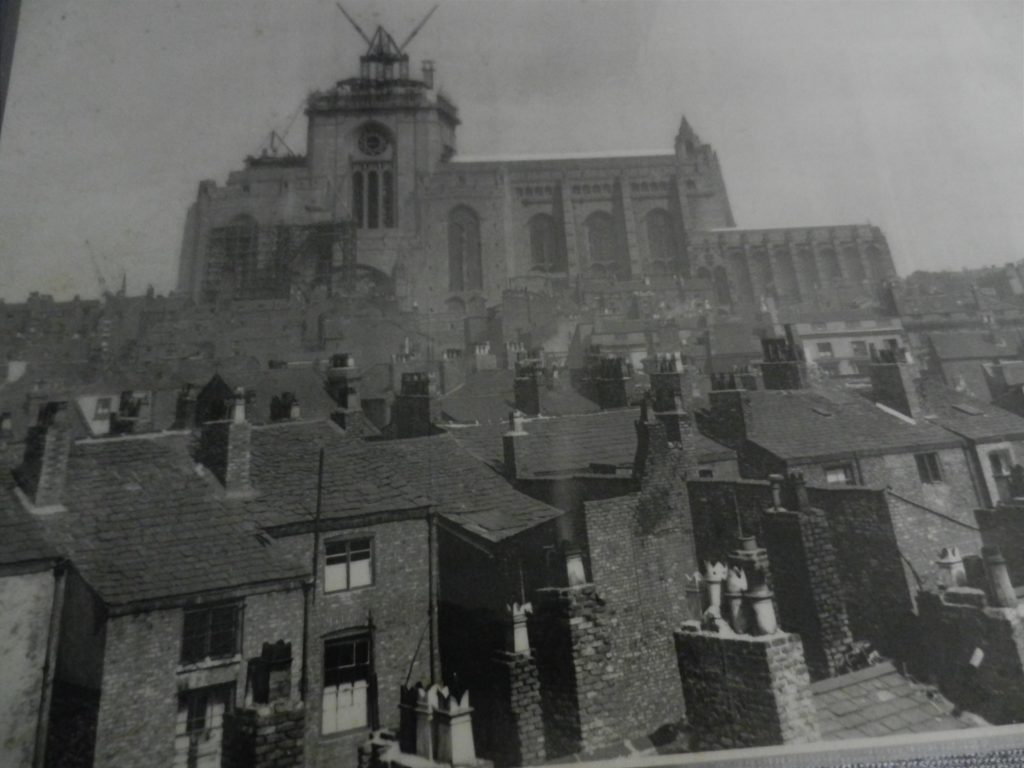
The theme of today’s blog is the newly created diocesan sees in the 19th century. In that context the photo chosen above is inappropriate as the building programme for the gigantic Liverpool Anglican Cathedral did not begin until the early 20th century. However, the see was created in 1880 and a modest local parish church used as the site for the bishop’s seat until the building of the new cathedral began on St. James’ Hill. Not completed until the 1970s this vast building is said to be the largest ecclesiastical building in Britain and in the top five globally, it is over 200 yards long and frighteningly cavernous when first entered.
The photo. has no date but is presumably inter-war or 1940s. The high density working class housing shown (not far from the Docks) has long-since been demolished by slum clearance schemes.
Stimulated by, among other things, a desire on the part of the Established Church to re-attract congregations lost to the Nonconformist Churches, especially after the national survey of public worship in the early 1850s, the number of diocese was increased from 21 to 29 to effect a more vigorous control over parish clergy. This meant that existing church buildings were elevated to the status of cathedrals by the installation of a bishop’s chair, these being;
Ripon, 1836, previously a medieval collegiate minster functioning as parish church after the Reformation.
Manchester, 1848, previously a parish church.
St. Albans, 1877, previuously a Benedictine abbey church, functioning as a parish church after the Reformation.
Truro, 1877, the one new-build.
Liverpool, 1880, previously a parish church but later a new-build.
Newcastle, 1882, previously a parish church.
Wakefield, 1888, previuously a parish church.
Southwell, 1884, previuously a medieval college of secular canons then a parish church after the Reformation. It, Ripon and Beverley had been seen as outliers to York cathedral, Beverley, then, was the only one not to be given cathedral status.
(to be continued)